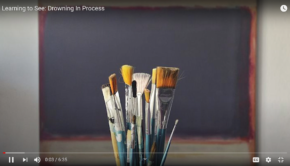
The Womb of God
Lisa Cole Smith
From our Mother’s Day service – May 12, 2019
Two words are helpful to keep in mind when reading the Bible: “prescriptive” and “descriptive.” Prescriptive is like a prescription – something you are instructed to do (usually for your own well-being).
The 10 Commandments are prescriptive.
Love the Lord your God and your neighbor as yourself is prescriptive.
Descriptive is pretty much like it sounds – it describes what happened, what someone said, the state of affairs in a particular time and place. For instance, the New Testament describes the fact that many of those Jesus called to be his disciples were fisherman. (It does not prescribe that therefore all disciples of Jesus must be fisherman.) The Bible describes how the Apostle Paul was a tentmaker. (Again, it doesn’t go on to prescribe this as the only or best way to make a living.) It describes the role of deacons to the men who were deacons. (It doesn’t prescribe that being a man is a prerequisite).
You get the picture.
In the Bible, connecting to God as father is both descriptive and prescriptive. Jesus and the Bible in general use Father imagery to describe God’s relationship to us. Then, Jesus prescribes our use of the term as an invitation to call God something more than a distant impersonal creator; to enter in to intimate, knowing relationship with God as Papa (Abba).
In the same way, the Bible is both richly descriptive and prescriptive in our use of mother imagery for God. “Rechamim,” the root word for “mercy” or “compassion,” is a word frequently used of God. It comes from the same root as the word for “womb” or “uterus.” In short, God’s mercy is like the mercy of a mother for her child; the child she bore from her womb. There is a significant invitation in the Bible to embrace the “wombness” of God’s compassion; not just feminine imagery for God, but mother imagery in particular.
And why not? The way a papa protects his child is particular. The way a mama protects is particular as well.
Consider God as a mama hen and her people as her chicks:
Matthew 23:37 “Jerusalem, Jerusalem…How often have I desired to gather your children together as a hen gathers her brood under her wings…!”
Or consider God as a mama carrying her nursing baby on her hip, bouncing and shushing:
Isaiah 66:12-13 “For thus says the Lord… you shall nurse and be carried on her arm, and dandled on her knees. As a mother comforts her child, so I will comfort you; you shall be comforted in Jerusalem.”
The Bible talks about God giving birth and sitting on a nest:
Deuteronomy 21:11 “[God cared for them] like an eagle that stirs up its nest, that flutters over its young, spreading out its wings, catching them, bearing them on its pinions.”
And God laments her lost children of her womb:
Deuteronomy 32:18 “You are unmindful of the Rock that bore you, and you forgot the God who gave you birth.”
We are prescribed the use of both father and mother imagery; of Mama and Papa imagery to draw us close – into a deeply intimate and specific relationship with God. It’s intentional and loving, this prescription of mama and papa, to give us a much clearer picture of the nature of God.
Poetic Rendition of the Aramaic Lord’s Prayer
By Mark Hathaway
O Divine Womb,
birthing forth the river of blessing which runs through all,
Soften the ground of our being,
and hallow in us a space for the planting of thy presence.
In our depths,
sow thy seed with its greening-power
that we might be midwives to thy Reign.
Then, let each of our actions
bear fruit in accordance with thy desire.
Impart to us the wisdom to bring forth the gifts of the earth
and share them daily according to the needs of each being,
And restore that which has been usurped
by injustice to its rightful owners,
as we restore to others that which is not our own.
Do not let us be seduced
by that which would divert us from our purpose,
but make us sensitive to the moment at hand.
For from thy fertile soil is born the creativity,
the life-energy, and the dance,
from birthing to birthing. Ameyn.





